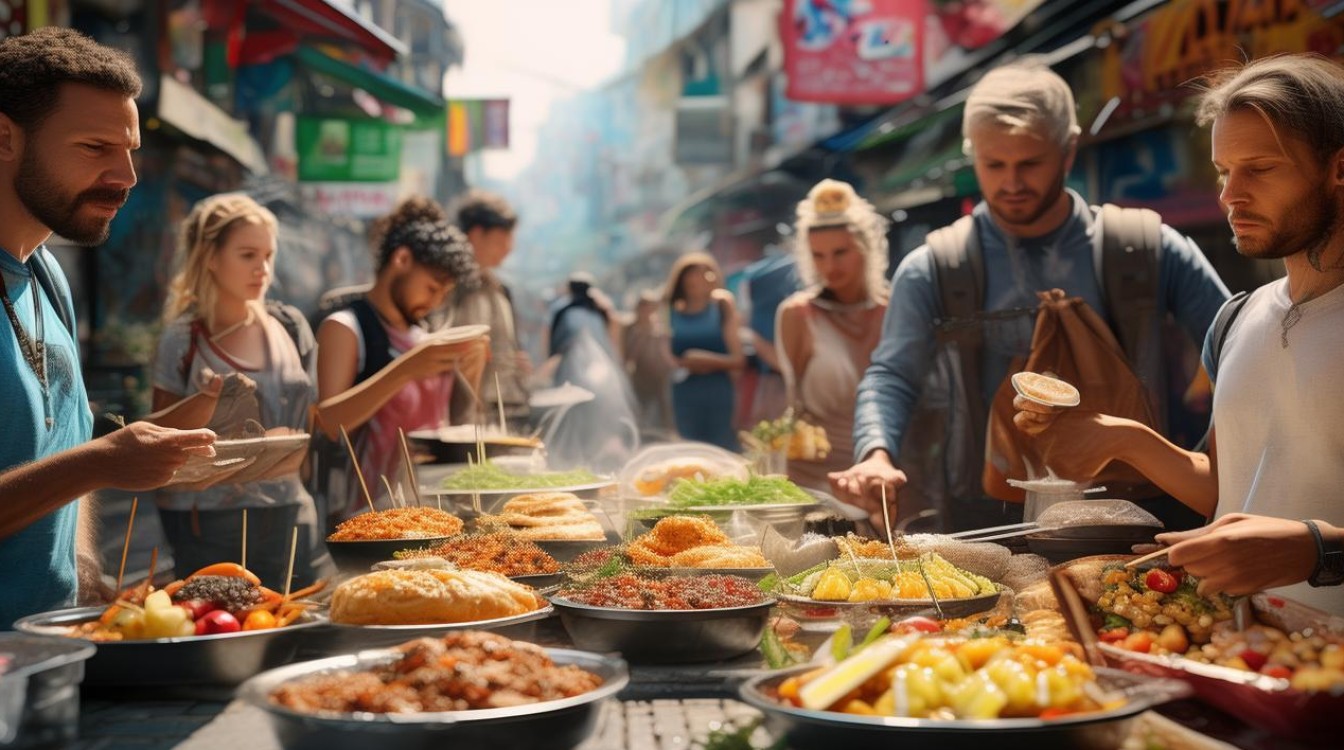Street food is more than just a quick meal—it’s a cultural experience. From the bustling markets of Bangkok to the vibrant food trucks of New York, every bite tells a story. For travelers and food lovers, trying local snacks is a way to connect with a place and its people. Here’s a journey through some iconic foreign street foods, their origins, and the flavors that make them unforgettable.

Takoyaki (Japan)
Hailing from Osaka, takoyaki are golden, bite-sized balls filled with diced octopus, green onions, and pickled ginger. The batter, made from wheat flour and dashi, is poured into special round molds and cooked until crispy outside and creamy inside. Served piping hot, they’re topped with savory takoyaki sauce, mayonnaise, bonito flakes, and seaweed powder.
What makes takoyaki special is its texture contrast and umami richness. Street vendors skillfully flip the balls with metal picks, a sight as entertaining as the taste. For visitors to Japan, trying takoyaki is a must—it’s a snack that embodies Japanese precision and creativity.
Churros (Spain & Latin America)
Crispy, sugary, and often dipped in thick hot chocolate, churros are a beloved treat with roots in Spain. Made from choux pastry piped into long strips and deep-fried, they’re dusted with cinnamon sugar for extra warmth. In Madrid, locals enjoy churros con chocolate as a breakfast or late-night snack.
Latin America has its own twist, with fillings like dulce de leche or guava. Whether plain or stuffed, churros are a universal comfort food. The simplicity of ingredients—flour, water, and sugar—shows how street food can turn basics into something extraordinary.
Banh Mi (Vietnam)
A legacy of French colonialism, banh mi is a sandwich that perfectly blends East and West. A crusty baguette is filled with ingredients like grilled pork, pâté, pickled vegetables, cilantro, and chili sauce. The result is a harmony of crunchy, tangy, spicy, and savory flavors.

In Ho Chi Minh City, banh mi stands are everywhere, each with its own secret recipe. What sets it apart is the freshness—the bread is baked daily, and the fillings are prepared just before serving. For a quick, satisfying meal, few street foods rival banh mi’s balance and depth.
Arepas (Colombia & Venezuela)
These cornmeal patties are a staple in Colombia and Venezuela, grilled or fried until golden and stuffed with cheese, meat, or beans. Arepas can be eaten plain or loaded with toppings, making them versatile for any meal.
In Venezuela, the arepa reina pepiada—filled with chicken, avocado, and mayo—is a national favorite. Colombian arepas are often thinner and served with butter or hogao sauce. Both versions highlight how a simple ingredient like corn can be transformed into something hearty and delicious.
Poutine (Canada)
Originating in Quebec, poutine is a hearty dish of crispy fries topped with cheese curds and smothered in gravy. The magic happens when the hot gravy melts the curds, creating a gooey, savory mess.
While it started as a late-night diner food, poutine has become a symbol of Canadian comfort cuisine. Variations now include toppings like pulled pork, mushrooms, or even lobster. For visitors to Montreal, trying authentic poutine is a rite of passage—it’s messy, indulgent, and utterly satisfying.

Currywurst (Germany)
A Berlin icon, currywurst is a steamed then fried pork sausage sliced and drenched in a spiced ketchup-curry sauce. Served with fries or a bread roll, it’s a post-war invention that became a cultural phenomenon.
The sauce is key—each vendor has a unique blend of spices, from sweet to smoky. Locals debate who makes the best version, but one thing’s certain: currywurst is a taste of German ingenuity and love for hearty flavors.
Samosa (India & Beyond)
This triangular pastry, stuffed with spiced potatoes, peas, or meat, is a staple across South Asia and the Middle East. Deep-fried to a crisp, samosas are often paired with mint or tamarind chutney.
In India, they’re a popular tea-time snack, while in Pakistan, larger versions are a meal on their own. The spices—cumin, coriander, garam masala—make each bite aromatic and warming. Samosas show how street food can carry centuries of tradition in a single bite.
Gelato (Italy)
While not always considered street food, gelato stands are everywhere in Italy, offering creamy, dense scoops in flavors like pistachio, stracciatella, or fruity sorbets. Unlike ice cream, gelato has less fat and more intense flavor.

In Rome or Florence, grabbing a cone of gelato while sightseeing is a ritual. The craftsmanship—using fresh, local ingredients—makes it a cut above mass-produced desserts. For sweet tooths, gelato is a taste of Italian passion for quality.
Why Street Food Matters
Street food isn’t just about convenience; it’s a window into a culture’s soul. The best dishes are often passed down through generations, made with techniques perfected over time. They reflect local ingredients, history, and the creativity of everyday cooks.
For travelers, trying these snacks is a way to experience a place authentically. For food lovers, they’re a reminder that great flavors don’t need fancy settings—just skill, tradition, and a little street-side flair. Next time you’re abroad, skip the tourist traps and follow the locals to the nearest food cart. The best stories are often told through taste.

